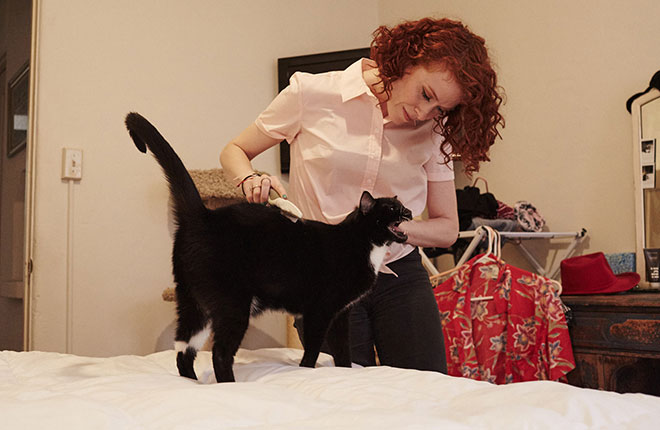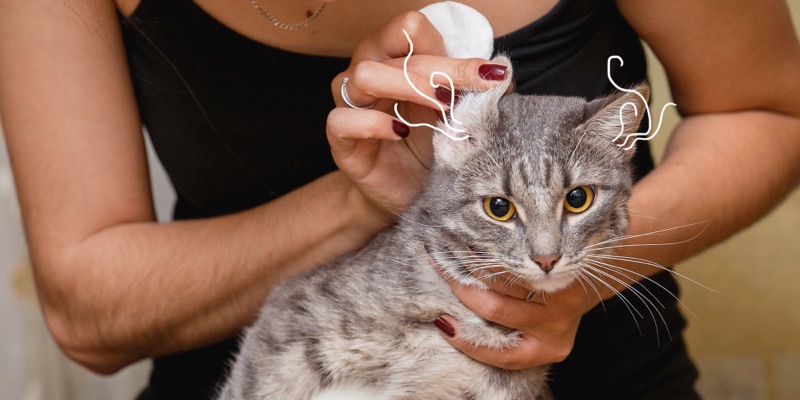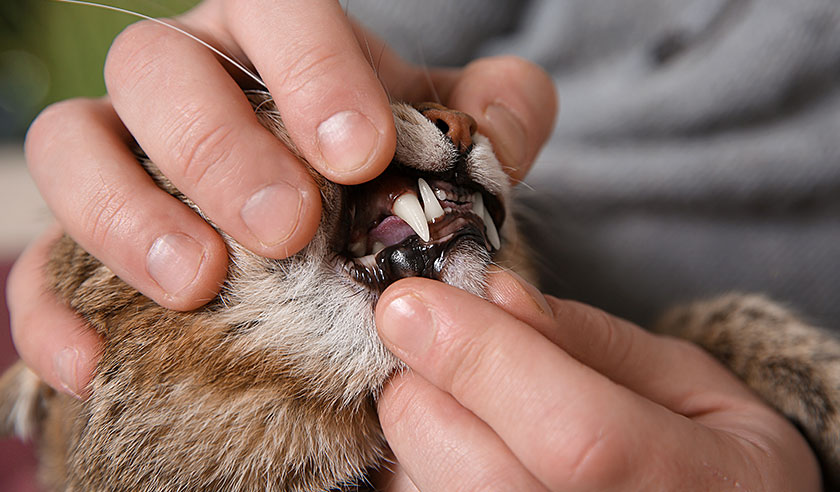Although cats are usually great at grooming themselves, they always appreciate being pampered by their owners. Additionally, staying up-to-date with grooming your cat can help keep your cat healthy and happy. Here are a few easy tips to groom your cat at home.
Benefits of Grooming Your Cat
Regular pampering not only gives your cat a chance to spend some quality time with you, it’s also good for their health and well-being.
- It Allows You Both to Bond.
Grooming your cat is a great way to build trust. - It Keeps Shedding Down.
Daily brushing means fewer hairballs for your cat — and less sweeping and vacuuming for you. - It’s an Opportunity to Give Them a Once Over.
While brushing your cat, you can easily check for fleas or ticks, new lumps or bumps, or any areas that seem tender or painful.
How to Groom Your Cat at Home
Grooming a cat isn't as simple as brushing their fur, and for some cats, even that part can be uncomfortable. In addition to brushing, grooming a cat also involves nail trimming, ear cleaning, teeth cleaning, and sometimes bathing. When taking the time to learn how to groom your cat, consider that you want this to be a positive experience for both of you. If you or your cat are struggling with any aspect of grooming, you might want to consider having a professional groomer or your veterinarian perform those services.
Brushing Their Fur
Brushing your cat’s fur regularly will keep their hair in good condition, including preventing matted fur and removing dirt and debris.
- Which Brush Is Best?
For most cats, a dual-sided brush is all you need. If your cat has extra-long locks, a “moulting” comb is a great detangler. If they’re sensitive to touch, try a rubber brush or grooming mitt. Ask your veterinarian or groomer for recommendations. - How to Brush Your Cat.
Start with short, gentle strokes in the spots they love being pet. After each session, give them a treat and a play session.
Trimming Your Cat's Nails
Most cats need their nails trimmed every 1–2 weeks. If your cat is new to the nail salon experience, start with just one paw — or even one claw — at a time. Here are some tips to make their experience as painless as possible.

Practice, Practice, Practice.
Start by helping your cat get used to sitting on your lap and having their paws touched before you pull out the clippers.

Hold Their Paw.
With your cat in your lap, use two fingers to gently press the nail so your clippers can reach it.
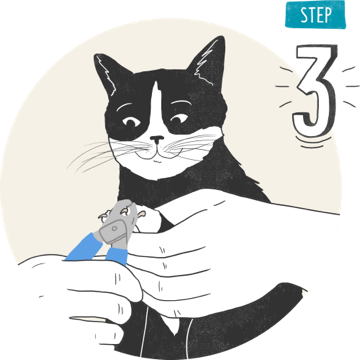
Take a Little Off the Top.
Use clippers with a nail guard or clip the nail right at the point where it's starting to curl.

Avoid the "Quick".
This is the pink triangular area at the base of the nail. If you get too close, the nail might bleed a little. Make sure you have a styptic pencil or cornstarch on hand, in case this happens.
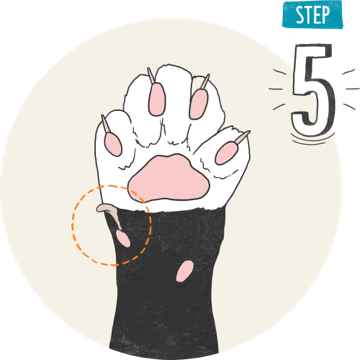
Don't Forget Their "Thumbs".
Because dew claws are on the inner side of each paw, they don't get worn down as much with regular scratching.
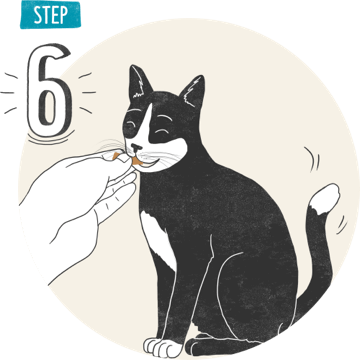
Don't Forget to Reward Them.
End every session with a super-yummy treat and a fun play session.
Bathing Your Cat
Most cats will do everything they can to stay out of the tub. But bath time doesn’t have to be a battle. You can help your cat get used to the tranquil waters of your tub. The key is to go slow — and if you have a kitten, start early.
Get Your Supplies Ready
- Sink or bathtub
- A pitcher filled with warm water or a detachable showerhead set on low
- Pet shampoo (people shampoo is too harsh)
- Yummy treats
- Fluffy towels
- A second pair of hands, if there’s one available
Give Them a Nice Soak
- Put a towel or other non-slip surface on the bottom of your sink or tub.
- Fill with just a few inches of warm water before you bring in your cat.
- Holding your cat, place them in the sink or tub.
- Use the pitcher or showerhead to wet your cat’s fur, starting at their neck. Don’t pour water over their head, as this can give them an ear infection.
- Apply a small amount of shampoo, keeping it away from the eyes.
- Thoroughly rinse them, using the pitcher or showerhead.
- Gently dry your cat.
ZPC-00179R3
